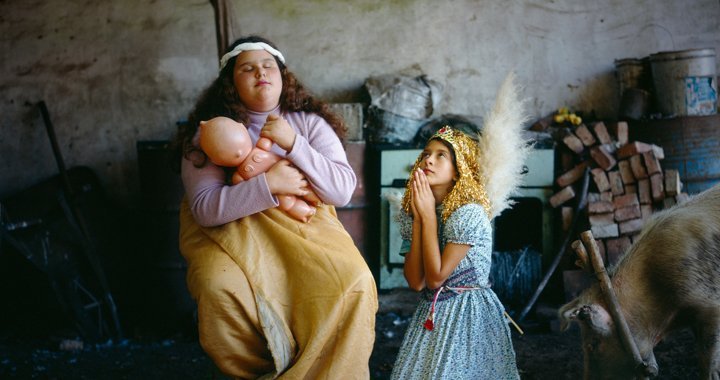
A way to embrace things
An interview with photographer Alessandra Sanguinetti
Evita Goze
11/09/2015
Alessandra Sanguinetti was born in New York, but grew up in Argentina. Her most famous photographic series, The Adventures of Guille and Belinda, was my first introduction to photography as a tool for telling stories instead of catching decisive moments or enjoying only the formal qualities of an image. It was also the first photobook I bought. The Adventures of Guille and Belinda documents 15 years of life and the growing up of two girls in a rural area of Argentina. Guille and Belinda are cousins, the opposites of each other. Belinda is skinny and beautiful, whereas Guille is chubby. They play mommies and hide and seek, pretend to be Ophelias, Wise Men from the East, and a couple, and slowly grow out from the dream world of childhood where everything seems possible.

Summer #2. From The Adventures of Guille and Belinda series
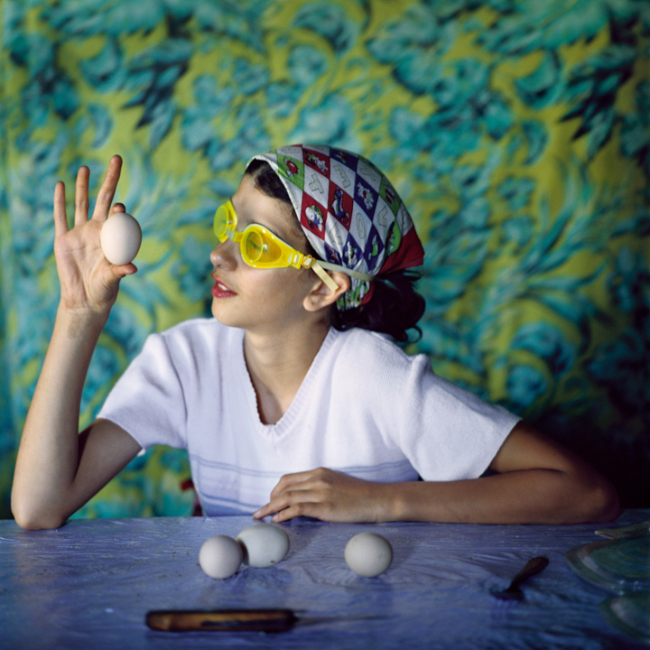
The Explorer. From The Adventures of Guille and Belinda (2002) series
Alessandra has said that she would like to be like Belinda in her next life. “Because she is very private, we don’t talk with Belinda much. She doesn’t talk. She is the kind of person that won’t smile to make you feel better. (...) Really, she is a rock—in a good way.” At first I think that Alessandra doesn't even have to wait for the next life. It seems like she has put a fence around herself and that there is no entrance for an outsider. “Photography, for me, is a way to embrace things,” she says on a sultry evening at the ISSP presentation in Pelči, Latvia, where she taught one of the masterclasses. At the beginning of the interview I repeat this phrase and ask if she could expand on it, but she replies – no, that's the best way in which I can say it. Also, later she will deflect some questions, saying “there will just be bad answers”. She doesn't want to be photographed. But the more I listen to her, the more I like her. Because of her sharp honesty. Because of the warmth in her voice when she talks about her work and the people she photographs. We are sitting in her classroom at Pelči Castle and she has agreed to a short interview while waiting for her students to arrive with today's work. “You know, maybe this is not the best time for an interview,” she sighs, “let's try one more time?”

Fifteen. From The Adventures of Guille and Belinda series
You said that, in the beginning, you didn't think that being a photographer was a real profession, and that you chose to study anthropology instead. Do you think this has influenced your work?
Probably it did. Everything you do influences your work. If I had studied architecture, my work might have been completely different. But I was always interested in people. And I guess my mother was, too; that's why she had all those books about anthropology. So it made sense to study anthropology. I think it helped me to start seeing photography as something that I wanted to do.
What changed your mind?
I was taking a lot of pictures, but I didn't think at all about being a photographer. My family wasn't connected with art or anything. But then I enrolled a workshop that a friend convinced me to take. It was the first time that I was exposed to art in a sense of self-expression and playfulness. There I was exposed to all these books and different authors that I had never seen, and to people that were telling their own stories and examining reality. I started to be exposed to authors, not just icons. Before, I just used to look at Cartier-Bresson, at iconic images. There, I was introduced to photography more like in the way that I had been introduced to literature – as something that can take you away, you can invent things, you can go into other people's worlds, learn about the world. But mostly, it was there that I met my ex-husband, who was also in that class and was really serious about photography. He wanted to go study at ICP. And I wanted to do something in order to be with him, so I said – hey, my grandfather lives in New York, we could go there together. So I went to study at ICP. After a year there, when I came back to Argentina, I knew that photography could be what I want to do with my life. At ICP I realised that you can make a living from it; I met people who were very different – it wasn't just a stereotype that I had in my mind [that all photographers are bearded hippies – E.G.].
After ICP you started to work as a photo editor.
At first, I worked as a freelance photographer for a newspaper. And I was so bad because I had no work experience at all. I remember they sent me to take pictures for the newspaper's tourism section, of a town where people go on weekends. It's not a place I would ever go on a Sunday, but it's really popular. I went there and I was like – I don't like this. I didn't take any pictures. I came back and I said – I can't, I don't think it's a good place to go to.
What did they say?
I think the editors didn't know whether to kill me or feel sorry for me (laughs).
Did they give you any more jobs after that?
Yeah, that was a good lesson. They just treated me like the moron I was at the moment. They said – well, you know, this newspaper isn't about you (laughs). I was freelance, the lowest of the low in the photography section, and taking pictures of famous soap opera stars. And then I got an offer. They were changing the director of one of the main newspapers, and this guy wanted to bring in new blood – to have something fresh and new in the photography department – so he started hiring people who didn't have any experience. He hired me to assist an editor in the international section, where I also made a fool of myself, at first.
What did you do?
That was a period during which I didn't read newspapers much; I was in my own little world. They came and asked me for a picture of comandante Marcos [i], the revolutionary from Mexico. This was the early or middle nineties. I had no idea who he was. So you would go and ask the people who worked on computers; it wasn't like now, when everyone has immediate access. And he had a mask on in every single picture. When the journalist came and asked if we have his picture, I said – there is nothing where he isn't wearing his mask. They had so much fun that day, at my expense. But the job was very interesting. A really good learning experience. But it's something I never want to do again. Also, the newspaper, when I went in, was a male-centric world. You could smell the testosterone in the room. The new director hired women, so there was a lot of conflict at first, and then the men started to be pushed out a little. Then they put me in as an editor in the Sunday magazine. It was fun, much more creative; they gave me much more freedom. My boss was pretty generous, and on Friday afternoons I was allowed to go to the locker where they stored all the medium-format film for the magazine. I could just fill my bags with film and go start photographing the weekend.
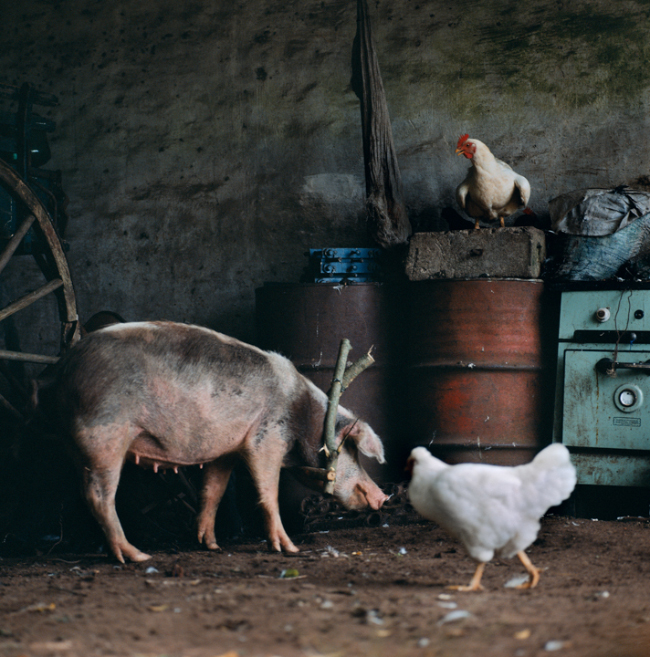
From On the Sixth Day series
Was it during this time that you started working on your project, On the Sixth Day?
Yes.
Did you grow up in the countryside yourself?
No, I was a city girl. But my family has a farm in the countryside. We would spend the summers and weekends there. Those are the best memories from my childhood. But only visiting. So I was always an outsider, in a way.
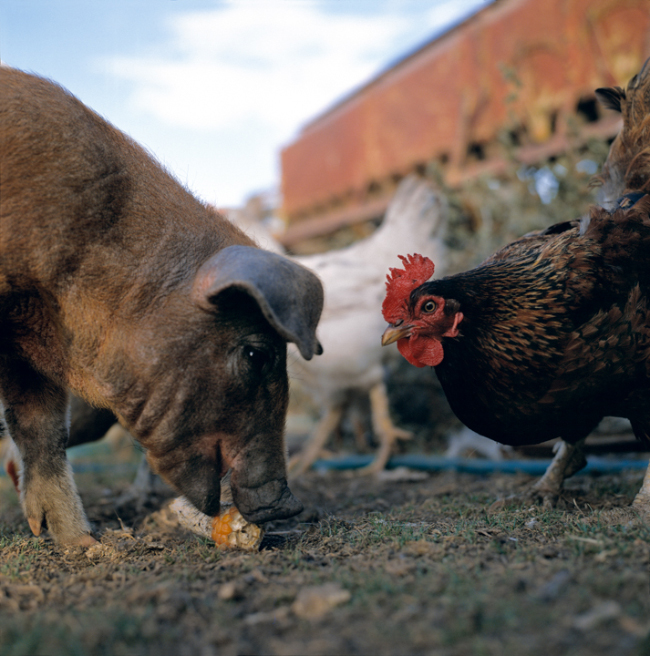
From On the Sixth Day series
How did the project On the Sixth Day start? You said that you don't usually have a clear idea before you start shooting – you start taking pictures and then, at some point, you slowly realise that this could be a body of work, right?
Yes. When I came back from ICP, I had these images in my mind that I had to photograph – colour photographs, and they had to be strong images of the farm. I hadn't seen that before in Argentina. The countryside in Argentina, at the time, was well represented in music, painting and literature, but in photography, it was mostly just reduced to clichés. At first, I was going to make a work about the whole countryside, and then I just naturally gravitated towards the animals; by doing, I started realising what was important to me.
How long did you work on that project?
The first image that made it into the book was taken in 1996 or '97, and the last image I took was in 2004. Most of the work was done in the 90s. And then I added a couple of images afterwards. But it was done on the weekends, when I could steal time away from my job.
When a project takes such a long time, how do you know when it's done?
I think you are done when you have articulated everything you can about something, and in the best way that you can. I don't think you ever finish. I still see images for On the Sixth Day. I could go on and repeat myself, but I wouldn't be adding anything. But with Gije and Belly I'm not done, because I still photograph them. We will see what happens; all three of us change so much.
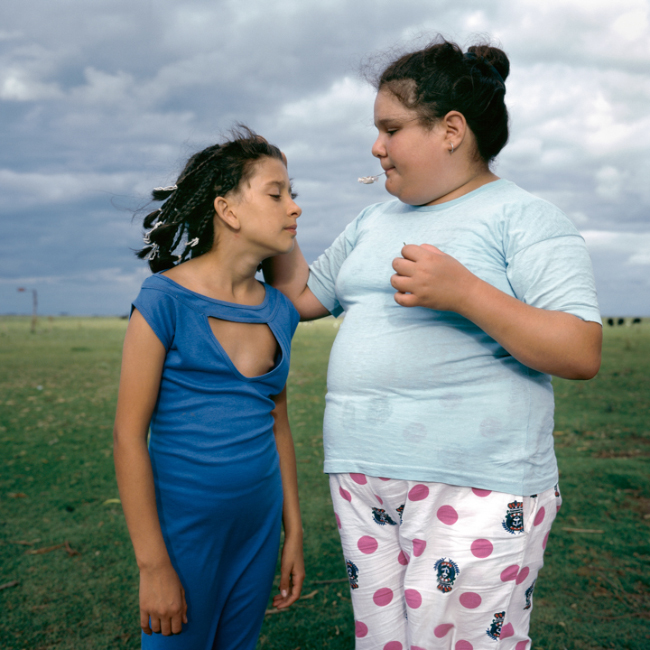
The Blue Dress. From The Adventures of Guille and Belinda (2000) series
How did the girls feel about all this attention they got from you? Was it a bit weird for them to be photographed so much?
No, no. Because I didn't appear just out of the blue – I was there all the time, photographing at their grandmothers. (On the Sixth Day is made on the same farm – E.G.) The people around there knew me as 'the girl with the camera'. I just started to hang out with the girls. Then I started to videotape them and take pictures of them, and then I started to have some ideas and we started to play. It evolved in a very natural way. I was just a person who was there in the summer – the immature woman who didn't have children at the age of 30, because when you are 30 in the countryside, you are supposed to have children, be married, and be super-responsible. But they loved the attention. Being nine or ten years old in the countryside – in the summer everybody is working, all your sisters and brothers are older, and they are working, too. There's hardly any TV, and then somebody comes and says – you are so special, you're so much fun, let's play!
Photographer Vanessa Winship, a tutor at the ISSP Summer-school some years ago, told her worried students – the ones who were afraid to approach strangers – that when you take a picture of someone, you make him or her feel more special.
Right. You are not bothering people. People say “yes”, they let you in. It's a good thing to be noticed, and most people appreciate it.

Madonna. From The Adventures of Guille and Belinda (2001) series
Did there come a point when the girls didn't want to be photographed anymore?
Oh, sure, they would get tired, they would act like divas and say – oh no, we are too busy. Then I would bribe them, tell them - common, I'll take pictures, and then afterwards, I'll take you to the river to bathe. They were kids; sometimes they would get bored and I would have to find a way to get them out of it. And when they were older, they were even more pathetic; they just weren't as interested. But it never bothered them. They do what they want; they never do anything because they have to.
All we see is the success, and you becoming famous. But how much work was actually put into it? Are there a lot of discarded images?
It's also the work that comes before. All the work I did for On the Sixth Day, all my time there, without knowing it, I had become trusted by the community. I had developed a certain eye or a certain craft. Sometimes everything happens at the exact right moment. They were nine and ten, and I was going through a particular time in which I didn't want to be around violence or dead animals, so I started paying attention to them. There is a lot of work behind every project. During the first two years, every summer I spent every other day with them. There are so many pictures that didn't work out. Thousands of pictures. Pictures of them in school, as they're sleeping, with their friends and parents. But then you edit it down really carefully.
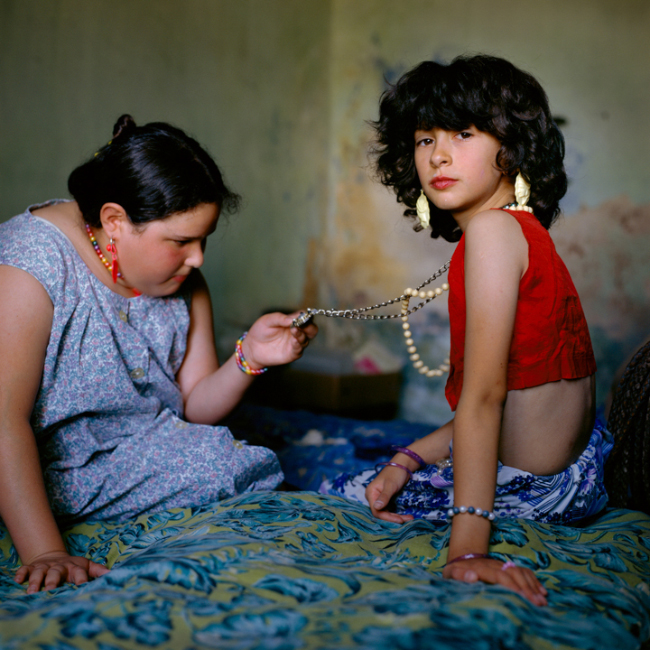
The Necklace. From The Adventures of Guille and Belinda (1999) series
Was it hard to think about a new project you would want to work on next? You also said that you were a bit fed up with photography.
It wasn't only because I had reached the end with that stage of the project; life also changes. I was 30-something, I struggled through a disease that really impacted me. I was taking medicine that was really bad for me for a few years, and then we moved to New York with my ex husband; that was a mistake. It was good that I found a gallery and all that, but I didn't need to stay there; I should have just gone back to Argentina. Then I had my daughter. That really changes everything. You don't have time to daydream anymore. And the daydreaming – just staring at the wall and thinking – was a big part of it. I never had to think of an idea – work would arise out of my interests or out of my life. If I have to start thinking about an idea, I'm sure it's not going to work out. Photography just lost a lot of its interest for me. Also, the freshness of the first work you do – it's very hard to reproduce it, so maybe you are disappointed at first, you expect too much of yourself. You havebecome just another person, time goes by, and you have to get to know that other person.
After such a successful project, isn't it hard to start something new also due to the pressure coming from other people?
I don't feel that much pressure from other people, but by me. I'm really demanding of myself; I'm my own worst judge. I can really be my own enemy. But as you get older, you become more humble, and a certain assuredness or arrogance that you had when you were younger has disappeared. It's not about what other people think – it's really if I'm happy with what I'm doing, and if I see a reason as to why I'm doing it. If I find myself sitting around and thinking – What's my next project?, I'd rather just get another job.
I read in one of your interviews that, for a long time, you didn't want to do any work outside of Argentina.
Yes, because in New York I couldn't relate. All my history, everything I knew was in Argentina. I was in a place that I didn't know, and which didn't have any history for me; it was just really hard to break in. And it still is.
Did it get easier as time went by?
A little. Not that much. Sometimes I think I should be in Argentina now.
Do you still go there often?
Yes, I go there a lot. My ex-husband lives there, so I take Catalina, our daughter, to be with him twice a year (for a long time), and I have friends and family there.

The Couple. From The Adventures of Guille and Belinda (1999) series
Do you take any photographs there?
The last time, I went to visit Gije and Belly; I always go visit them. Sometimes I don't take any pictures; right now I know that I need a break. But on this last trip, I photographed their kids and had some conversations with them that might be useful for the book. [Alessandra is currently working on a new book about Gije and Bellinda – E.G.]
Do you photograph every day?
No. I used to photograph all the time, the way people do now with their cellphones. I used to be like that with a little camera. It was separate from my work, but I would need to be photographing all day. What I'm eating, where I am, self-portraits, my boyfriend, and so on. Now I'm kind of allergic to it.
But you said that you are taking a lot of pictures of your daughter.
Of my daughter, yes.
[i] A constructed persona, nom de guerre used by the main ideologist and spokesman of the Zapatista Army of National Liberation, a Mexican rebel movement fighting for the rights of the indigenous people of Mexico.